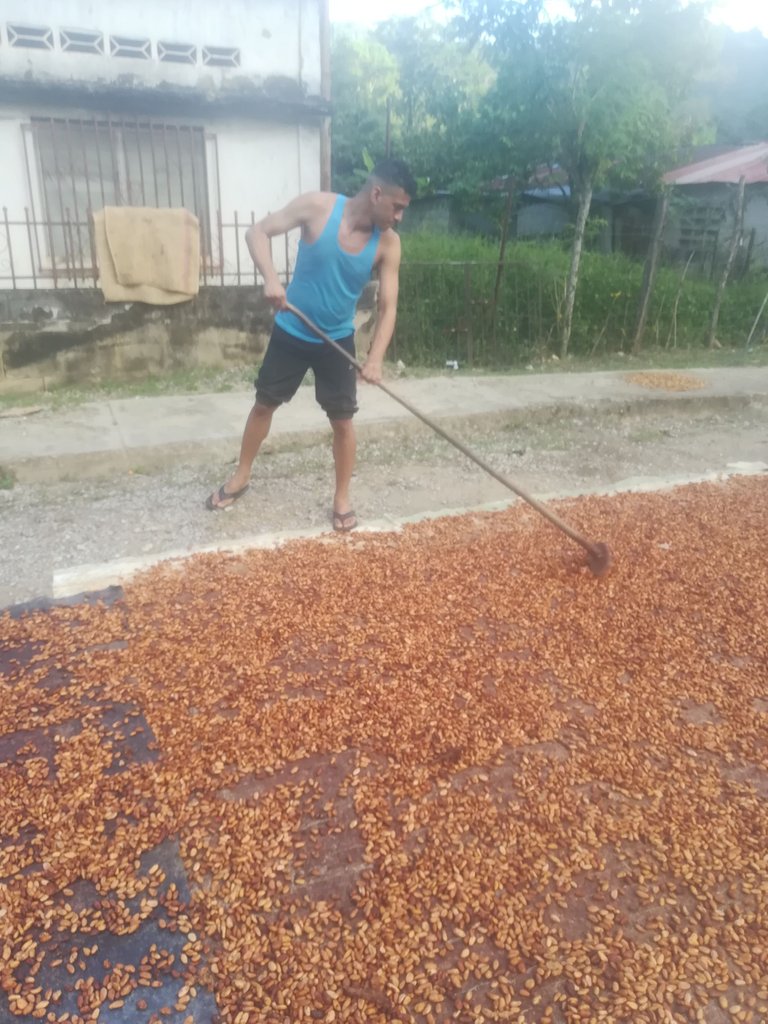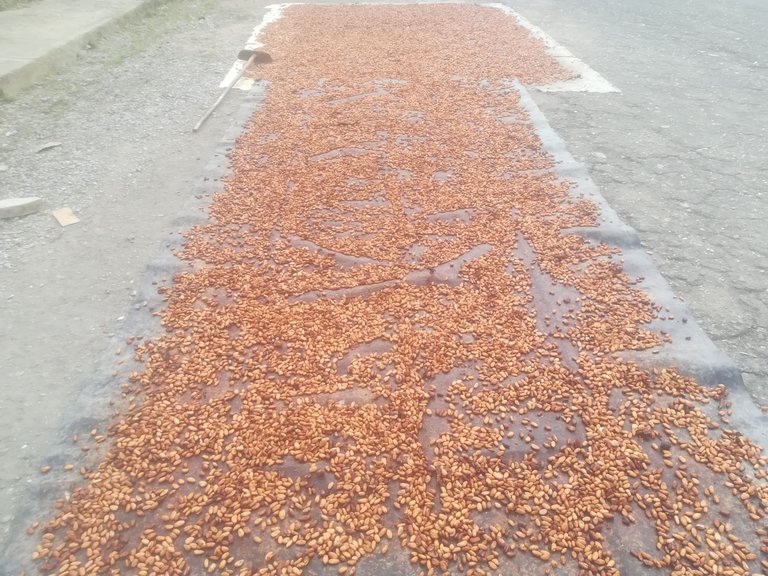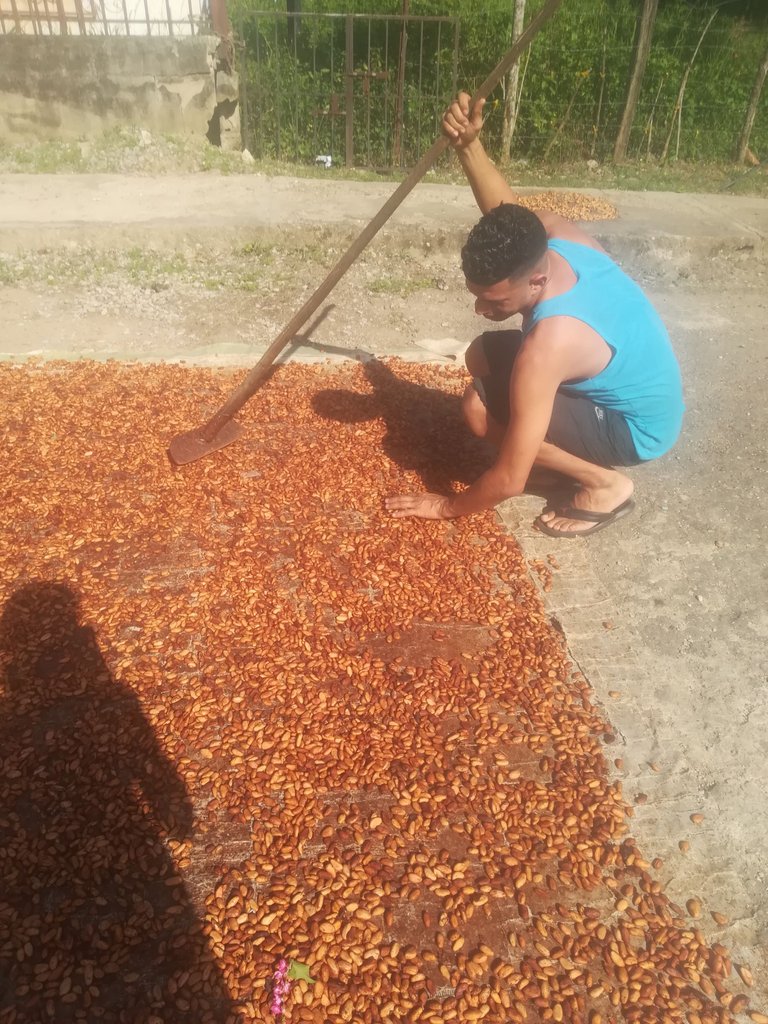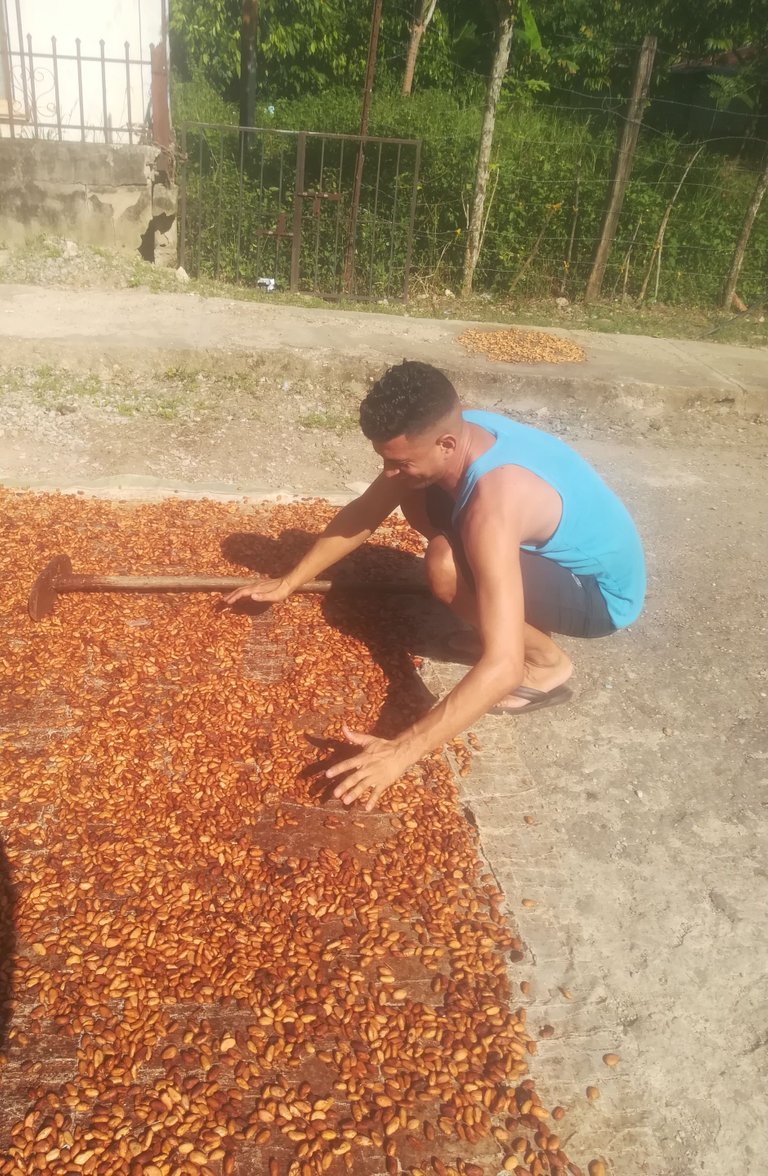
Feliz noche amigo de la colmena. Este domingo productivo estoy ayudando en el proceso de secado de la semilla del cacao, el cual luego de pasar un proceso de fermentación se echa al sol para terminar de quitar la humedad de la almendra y obtener ese aroma, sabor y buena calidad. Les invito a que me acompañen a conocer un poco más sobre esta semilla de la cual obtenemos el más rico y aromático chocolate.
Happy night friend of the hive. This productive Sunday I am helping in the drying process of the cocoa bean, which after passing a fermentation process is placed in the sun to finish removing the moisture from the almond and obtain that aroma, flavor and good quality. I invite you to join me to learn a little more about this seed from which we obtain the richest and most aromatic chocolate.

En Venezuela, el cacao se cultiva principalmente en terrenos cálidos, húmedos, con una temperatura promedio de 30°C (bosques tropicales húmedos), con una fauna y flora característica, asociada, que permite que los árboles de cacao crezcan tomando los aromas desde el medio circundante y expresándolos en sus frutos. El cacao crece dentro de este bosque, sin uso de pesticidas y con un hábitat peculiar . En su geografía, Venezuela dispone de un importante banco natural de cacao fino de aroma silvestre y comercial, que florecen en las condiciones ideales ecológicas y de microclima requeridas por este cultivo
In Venezuela, cocoa is grown mainly in warm, humid soils, with an average temperature of 30 ° C (humid tropical forests), with associated characteristic fauna and flora, which allows cocoa trees to grow taking the aromas from the surrounding environment and expressing them in their fruits. Cocoa grows inside this forest, without the use of pesticides and with a peculiar habitat. In its geography, Venezuela has an important natural bank of fine cocoa with wild and commercial aroma, which flourish in the ideal ecological and microclimate conditions required by this crop.
Cuando los españoles llegaron a Venezuela, el cacao se encontraba extendido en diversas regiones costeras en el centro, sur y este de la cuenca del Lago de Maracaibo, así como en el alto Orinoco. Al igual que los aztecas, los indios venezolanos tomaban una bebida preparada con la semilla de cacao que llamaban chacote y ofrendaban a sus dioses manteca de cacao que quemaban en unas parrilleras de barro. Otra característica similar de los indígenas con los aztecas, los indios venezolanos utilizaban la semilla de cacao como moneda, y preparaban una bebida con fines medicinales, cosméticos y religiosos.
When the Spaniards arrived in Venezuela, cacao was widespread in various coastal regions in the center, south and east of the Lake Maracaibo basin, as well as in the upper Orinoco. Like the Aztecs, the Venezuelan Indians drank a drink prepared with the cocoa bean that they called chacote and offered cocoa butter to their gods that they burned in clay grills. Another similar characteristic of the indigenous people with the Aztecs, the Venezuelan Indians used the cocoa seed as currency, and prepared a drink for medicinal, cosmetic and religious purposes.
La variedad descubierta por los españoles en Venezuela, es la denominada Criollo que tiene una calidad insuperable, aunque hoy en día no queden muchos árboles de esta variedad, ya que se introdujo la variedad del cacao trinitario, de mayor producción, pero menor calidad.
The variety discovered by the Spaniards in Venezuela is the so-called Criollo, which has an unsurpassed quality, although nowadays there are not many trees of this variety left, since the Trinidadian cacao variety was introduced, with a higher production, but lower quality.

Sucre es el estado que produce la mayor cantidad de cacao en Venezuela –cerca de 46% de la producción nacional– e históricamente los nombres de sus semillas han sido reconocidas entre las más codiciadas en el mercado internacional. En esta época del año es muy común que la mayoria de los pueblos del estado Sucre se encuentren en los patios de las casas secando la semilla de cacao para luego llevarlo al mercado de manera que las grandes chocolateras obtengan los derivados del cacao para que llegue a las manos del consumidor final.
Sucre is the state that produces the largest amount of cocoa in Venezuela - about 46% of the national production - and historically the names of its seeds have been recognized among the most coveted in the international market. At this time of year, it is very common for most of the towns of the Sucre state to be in the backyards of the houses drying the cocoa seed and then take it to the market so that the large chocolate companies obtain the derivatives of cocoa so that it reaches the hands of the final consumer.

Desde este rincón de Benítez Estado Sucre me encuentro secando cacao para exportar al resto del mundo. Gracias por su atención e interés en mi publicación. Hasta pronto amigos.
From this corner of Benítez, Sucre State, I find myself drying cocoa to export to the rest of the world. Thank you for your attention and interest in my publication. See you soon boys.

Bibliografía:
Congratulations @josevam! You have completed the following achievement on the Hive blockchain and have been rewarded with new badge(s):
Your next target is to reach 30 posts.
You can view your badges on your board and compare yourself to others in the Ranking
If you no longer want to receive notifications, reply to this comment with the word
STOPTo support your work, I also upvoted your post!
Check out the last post from @hivebuzz:
Support the HiveBuzz project. Vote for our proposal!